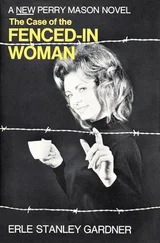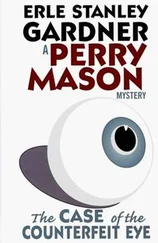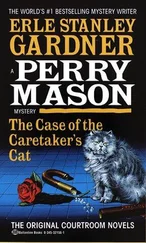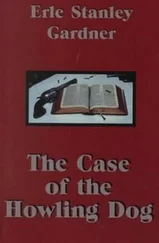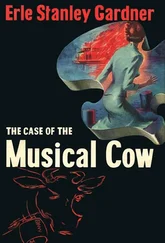“In a drawer in a table there were some knives, forks and spoons, three of each. There was one frying pan, one rather battered aluminum saucepan which had apparently been used to warm up the beans. It was still on the stove, and though the beans had been scraped out of it there were traces of canned beans still adhering to the pot. There was half a loaf of sliced bread on the table.”
“Was there any tablecloth?”
“No.”
“Anything else?”
“I’ve mentioned everything I can remember at the moment in the line of orthodox furnishings,” the sheriff said, “but I took a complete set of photographs showing the apartment as we found it.”
“Nothing had been disturbed when those photographs were taken?”
“No, sir. We took photographs showing everything in the apartment.”
“Those photographs were taken by you or under your supervision?”
“Yes, sir.”
“We ask that these twelve photographs be introduced in evidence and given appropriate numbers,” Hastings said.
“No objection,” Mason said.
“Now then,” Hastings said, “returning to this bullet, the so-called fatal bullet, which you have identified. What calibre was that?”
“A .38 calibre.”
“Could you tell from the direction of the groove marks what make of gun had discharged that?”
“Yes, it was fired from a gun which had the same rifling marks as a Smith and Wesson revolver.”
“Sheriff, did you ask the defendant if she knew anything about a .38-calibre Smith and Wesson revolver?”
“I did.”
“Did you receive any answer?”
“She said that she was under instructions to say nothing to anyone, that at the proper time she would tell her story and until then she had nothing to say.”
“Did you ask her husband, Harlow Bancroft, about a gun?”
“Yes.”
“What did he say?”
“He made virtually the same answer.”
“Did you search the firearms registry to see if he had purchased a weapon?”
“I did.”
“What did you find?”
“That on the fifteenth day of June of last year he had purchased a Smith and Wesson .38-calibre revolver, No.133347.”
“Did you ask him to produce that gun for you?”
“I did.”
“What was his answer?”
“He said that the gun was not available.”
“Did you ask him to explain that remark?”
“I did.”
“Did he give you any explanation?”
“No, sir.”
“Now then, directing your attention to furnishings other than what you have called orthodox in the apartment of the decedent, Willmer Gilly, did you find anything under the bed?”
“Yes, sir, I did.”
“What was it?”
“A Monarch Ten portable typewriter.”
“Did you have occasion to use this typewriter?”
“Yes, sir, I ran off the alphabet, both upper and lower case, on a sheet of paper.”
“Now, Sheriff, I show you what purports to be a note demanding the payment of three thousand dollars, which is to be placed in a red coffee can in accordance with subsequent instructions which are to be telephoned, and ask you if you recognize that note,”
“I do, yes, sir.”
“When did you first see that note?”
“It was handed to me by a lifeguard employed at a public swimming beach at Lake Merticito. He said it had been given him by a young—”
“Never mind what he said,” Hastings interrupted hastily, “that’s hearsay. But I will ask you whether you compared the typewriting on that note with the sample of typewriting you had taken from the Monarch Ten portable typewriter you had found in the room of the decedent, Willmer Gilly?”
“I did, yes, sir.”
“With what result?”
“Studying the alignment of the letters and a chipped type face, I became convinced there was no question but that this so-called blackmail note had been written on the typewriter which we found in Willmer Gilly’s room.”
“Returning now to the fatal bullet,” Hastings said, “did you make any attempt to match that bullet with any other bullet?”
“I did, yes, sir.”
“With what other bullets?”
“Harlow Bancroft owns a mountain cottage some thirty miles out of San Bernardino in the high mountains. I went to that lodge, or house, and looked around. The house is situated on property which comprises a little over two acres. In back of the house I found a target made of four thicknesses of Celotex, backed with a two-inch board. This target in turn had been placed upright against an embankment.”
“What else did you find?”
“I pried the Celotex loose from the board and found quite a number of bullets imbedded in the board. Most of these bullets were of .22 calibre, but three of them were .38 calibre bullets. I carefully excavated around the target and sifted the soil and found a large number of bullets, mostly of .22 calibre, but again I found half a dozen .38 calibre bullets.”
“Now then, do you have in your office a so-called comparison microscope?”
“Yes, sir, I do.”
“This is a microscope used in matching bullets?”
“Yes, sir.”
“Did you compare the fatal bullet, which has been introduced in evidence, with any of the bullets you recovered from the Bancroft property?”
“Yes, sir, I compared them all.”
“With what result?”
“I found two bullets in good enough shape to make a comparison.”
“With what result?”
“Both of those bullets had been fired from the same gun which had fired the fatal bullet.”
“Did you make photographs showing the fatal bullet superimposed upon these recovered bullets?”
“I did, yes, sir. Here are the photographs showing how the striations match perfectly. The fatal bullet is the one above and the recovered bullets are those below.”
“Each of these three photographs represents a different recovered bullet?”
“That is right. The top bullet in each photograph is the fatal bullet, or rather the top portion of the fatal bullet. The lower bullet is in each case the lower portion of one of the three recovered bullets.”
“We ask that these three photographs be received in evidence,” Hastings said.
“No objection,” Mason said.
Hastings turned to Mason with a triumphant smile. “Would you care to cross-examine?” he asked.
“Oh,” Mason said casually, “I have a few questions.”
Mason advanced to stand in front of the sheriff.
“You have stated that the so-called blackmail note was written on this Monarch Ten portable which you found in the room of the decedent?”
“Yes, sir.”
“The entire note was written on that typewriter?”
“I can’t swear to every single letter of every single word, because I’m a law enforcement officer and not an expert on questioned documents, but I did find a couple of defective type faces on that typewriter and I found those same defects on those same letters in the note, so on the strength of that I know the note was written on that typewriter.”
“What time was it when you got to the yacht, Jinesa ? That is, you yourself, personally?” Mason asked.
“Three-fifty-five p.m.,” the sheriff said.
“The Coast Guard cutter was standing by?”
“Yes, sir.”
“You had previously been notified by telephone?”
“Yes, sir.”
“And had proceeded immediately to the place where the yacht was found?”
“Yes, sir.”
“Now, was the yacht aground at the time it was discovered?”
The sheriff stroked his chin. “Frankly, I don’t know,” he said. “I think it was. It was floating when I arrived. The tide, I believe, was going out then.”
“Was the boat anchored?”
“There was an anchor out, yes.”
Читать дальше


